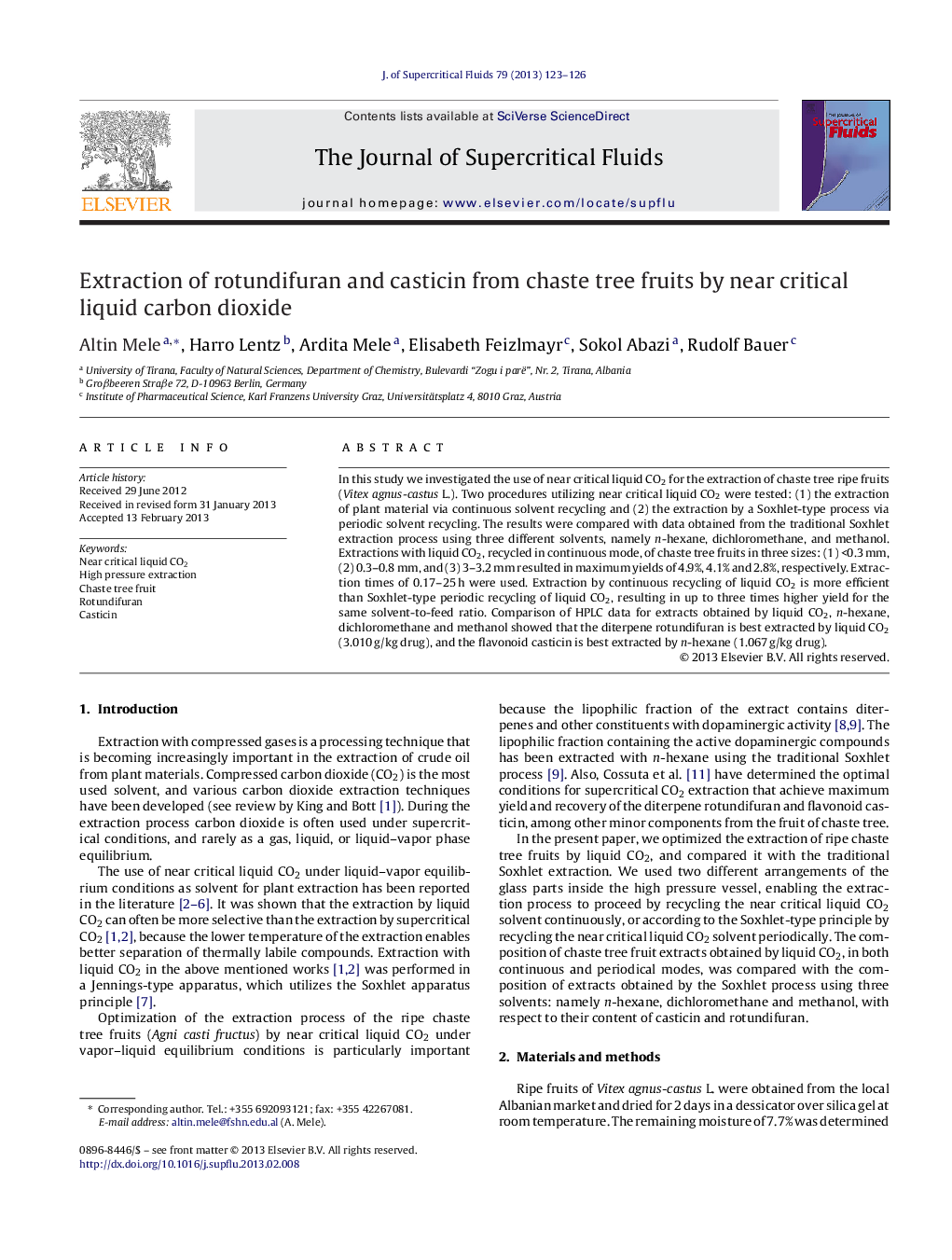| Article ID | Journal | Published Year | Pages | File Type |
|---|---|---|---|---|
| 230724 | The Journal of Supercritical Fluids | 2013 | 4 Pages |
In this study we investigated the use of near critical liquid CO2 for the extraction of chaste tree ripe fruits (Vitex agnus-castus L.). Two procedures utilizing near critical liquid CO2 were tested: (1) the extraction of plant material via continuous solvent recycling and (2) the extraction by a Soxhlet-type process via periodic solvent recycling. The results were compared with data obtained from the traditional Soxhlet extraction process using three different solvents, namely n-hexane, dichloromethane, and methanol. Extractions with liquid CO2, recycled in continuous mode, of chaste tree fruits in three sizes: (1) <0.3 mm, (2) 0.3–0.8 mm, and (3) 3–3.2 mm resulted in maximum yields of 4.9%, 4.1% and 2.8%, respectively. Extraction times of 0.17–25 h were used. Extraction by continuous recycling of liquid CO2 is more efficient than Soxhlet-type periodic recycling of liquid CO2, resulting in up to three times higher yield for the same solvent-to-feed ratio. Comparison of HPLC data for extracts obtained by liquid CO2, n-hexane, dichloromethane and methanol showed that the diterpene rotundifuran is best extracted by liquid CO2 (3.010 g/kg drug), and the flavonoid casticin is best extracted by n-hexane (1.067 g/kg drug).
Graphical abstractFigure optionsDownload full-size imageDownload as PowerPoint slideHighlights► The chaste tree fruits were extracted in two modes by near critical liquid CO2. ► The extraction time increases significantly when the plant particle size increases. ► The diterpene rotundifuran is extracted selectively from liquid CO2. ► The flavonoid casticin is found in higher amounts in n-hexane extracts.
